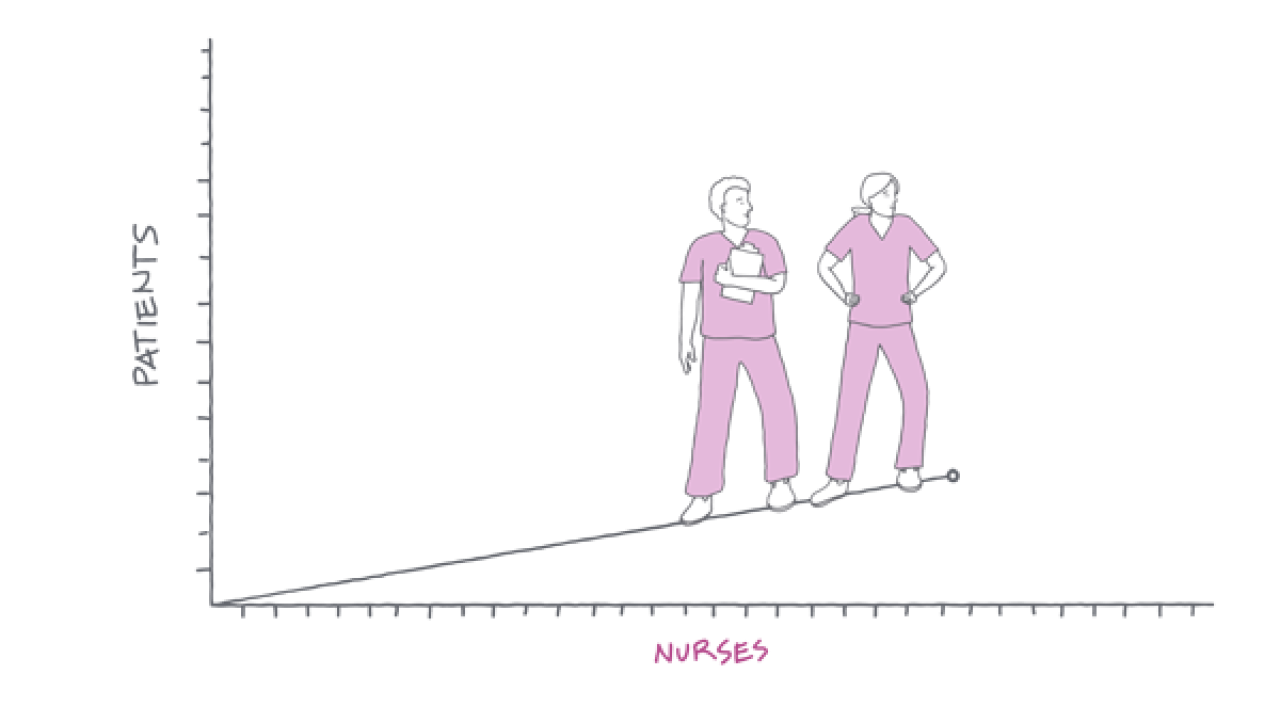
British Columbia will be the first province in Canada to implement minimum nurse-to-patient ratios, helping nurses deliver the life-saving care patients need.
More nurses equals better patient outcomes
The evidence is clear: minimum nurse-to-patient ratios save lives. When nurses have too many patients to care for, patient mortality increases significantly, as do a number of negative patient outcomes across a wide range of measures. In fact, a study from 2021 found that patient mortality increased by 16% for every additional patient in the nurses’ assignment.
Minimum nurse-to-patient ratios allow nurses to do what they're educated to do: provide the care patients need and deserve. California introduced nurse-to-patient ratios in 2004. A large study ten years later found that hospitals with ratios close to the state mandate reported significantly more favourable outcomes. The implementation of ratios allowed nurses to spend an additional three hours a day with each patient.
An appropriate nurse-to-patient ratio is also linked to fewer incidents of missed care, a decrease in patient re-admissions, reduced hospital-acquired infections, and shortened patient stays.

Improved working conditions will attract more nurses to the profession
When we make working conditions better for nurses, we can recruit more nurses to the profession and retain those who might otherwise leave. Over time, this will help lower the dramatic number of nurse vacancies around the province. When we retain experienced nurses, we keep valuable knowledge, skills, and real-life experience in our health-care systems – a win-win for nurses and patients.
When nurses feel supported in their work, fewer of them leave the profession due to burnout and distress. Research shows that two-thirds of working nurses say they’re more likely to stay in their jobs if minimum nurse-to-patient ratios are implemented. Shortly after implementing nurse-to-patient ratios in California, many hospitals saw nurse vacancies drop below 5%, well below the national average. In the state capital of Sacramento, vacancies decreased by 69% in four years. Similarly, within a few years of the implementation of nurse-to-patient ratios in Australia, nurse vacancies were almost entirely eliminated, with more than 7,000 inactive nurses returning to the profession.

Nurses know that ratios save lives
The implementation of minimum nurse-to-patient ratios has been—and will remain—a nurse-led solution to the current health-care crisis.
As part of the agreement negotiated with the Ministry of Health in April of 2023, minimum nurse-to-patient ratios throughout the province will include input from BCNU along with the Nurses’ Bargaining Association, health authorities, and the provincial government.
BCNU’s participation in this important work ensures BC nurses will continue to have a role to play in advocating for patient needs in hospitals, long-term care and assisted living, and community and non-hospital care settings around BC.


